Torque Defined
Torque is defined as the measurement of resistance to turning or rotating. Torque, often called torsional or twisting movement, tends to twist a body about an axis of rotation. A typical application is the tightening of a screw.
Torque applied in tightening a common bolt, nut, or screw is expended in three areas:
| • | The head |
| • | Bearing surface |
| • | Clamp load |
Clamp Load
About 50 percent of applied torque is used in overcoming bearing friction. This is the friction between the bearing surface of the bolt head, screw head or nut face, and the base material or washer (the surface the fastener is rotating on). Approximately 40 percent of the applied torque is used in overcoming thread friction. This leaves only about 10 percent of the applied torque to develop useful clamp load. Clamp load is the force that holds a joint together. Friction can account for as much as 90 percent of the applied torque on a fastener.
Torque Techniques
The frictional characteristics of each fastener or threaded hole can vary under a variety of circumstances. For example, consider a joint that has 10 bolts. If all 10 fasteners were torqued to 20 N·m and the clamp load is measured, all 10 bolts would most likely have different clamp load readings. Even though all 10 bolts are torqued at 20 N·m, it is not guaranteed that they have all reached the same clamp load. A rule of thumb is that the clamp load can vary ± 25 percent using torque control for joint assembly.
At times, critical applications such as cylinder head bolts require very tight tolerances for clamp load distribution. If torque is not considered to be accurate enough for these critical joints, an alternative method of tightening called TORQUE ANGLE may be used.
Torque Angle Method
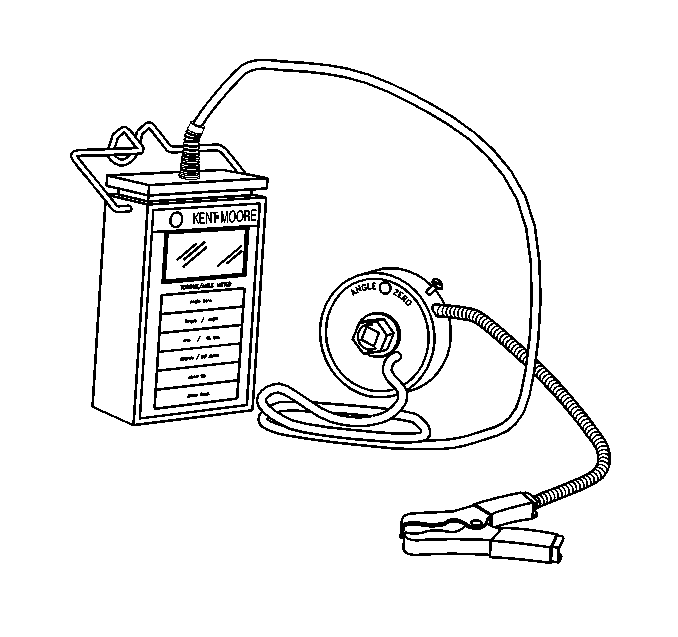
Torque angle is required for critical joints because it can help eliminate frictional variations in the joint. The following are the general steps used for the torque angle method:
- Tighten to a predetermined seating torque to remove any compliance out of the joint.
- Turn the fastener to a specified angle of rotation. Use the Torque Angle Meter J 36660-A .
This is the only acceptable general method for measuring this angle of rotation. Follow the specific procedure where it is provided.
Torque Wrenches and Techniques
The term TORQUE WRENCH is commonly used to describe a type of measuring tool. The tool is set or calibrated in such a way as to make possible the measurements of the resistance to turning (torque). The torque wrench measures this resistance to turning and, therefore, is the method used to obtain objective tightening data used in the assembly of fasteners. A torque wrench is a gage tool that can be compared with micrometers, dial indicators, vernier calipers, levels, and other measuring devices.
Tapered Beam Model Torque Wrench
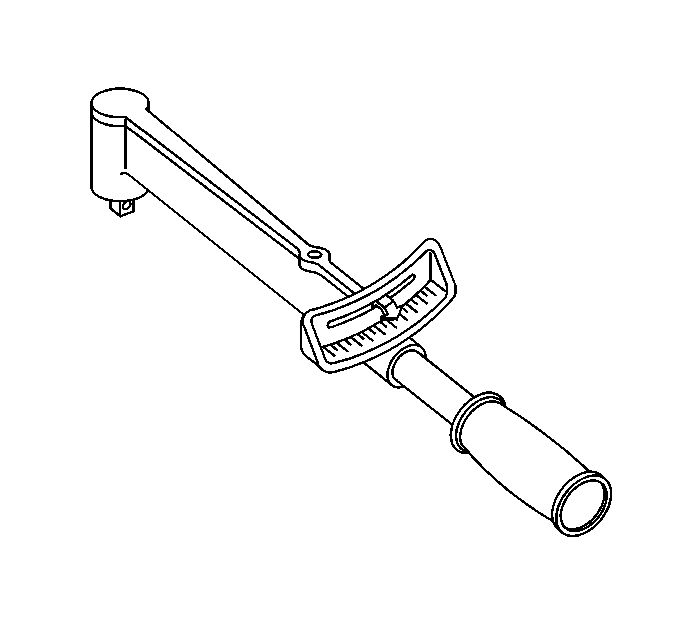
Of the many different types of torque wrenches available, the most popular in the service field is the tapered beam model. This model uses a pointer attached to the head that runs the length of the flexible beam (shaft) to a scale located near the handle. As the wrench is pulled, the beam bends and the pointer indicates the torque on the scale.
Click-type Torque Wrench
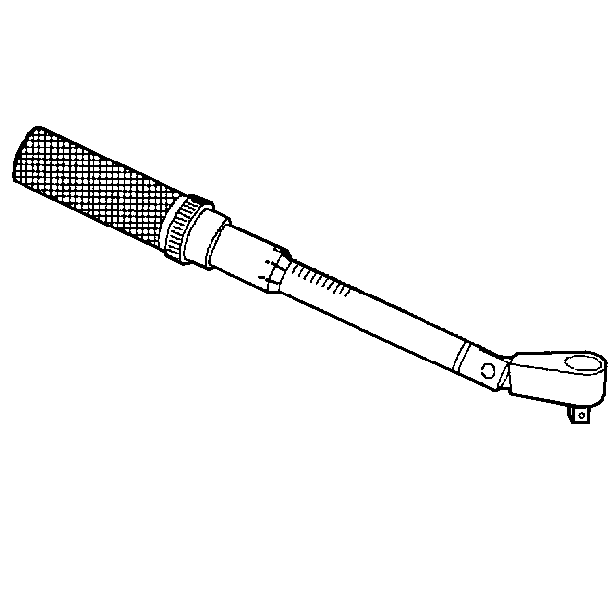
Another type of torque wrench is the CLICK type which is adjusted to a predetermined torque. Once the designated torque has been reached, the wrench has a reflex signalling feature that causes a momentary breakaway of the body of the torque wrench. This feature has the effect of sending a strong impulse to the technician's hand. Although once quite popular, these wrenches are not the preferred method for torque applications.
Pivoted Handle Torque Wrench
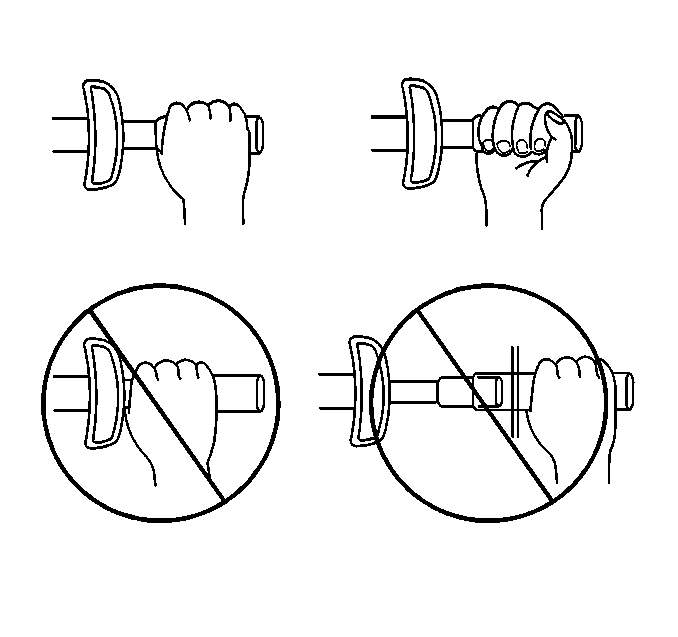
Some types of torque wrenches are equipped with a pivoted handle. If used properly, this handle permits the accurate and correct use of the torque wrench. In order to hold a pivoted type handle, it should be floated on the pivot point. This concentrates your pulling force. If the pivoting handle comes in contact with the yoke extension during the process of pulling, there is a very good chance the torque readings will be inaccurate because this could alter the wrench loading point. The design of the handle, however, makes it inconvenient to deliberately use the floating principle improperly.
Direct Reading Torque Wrench
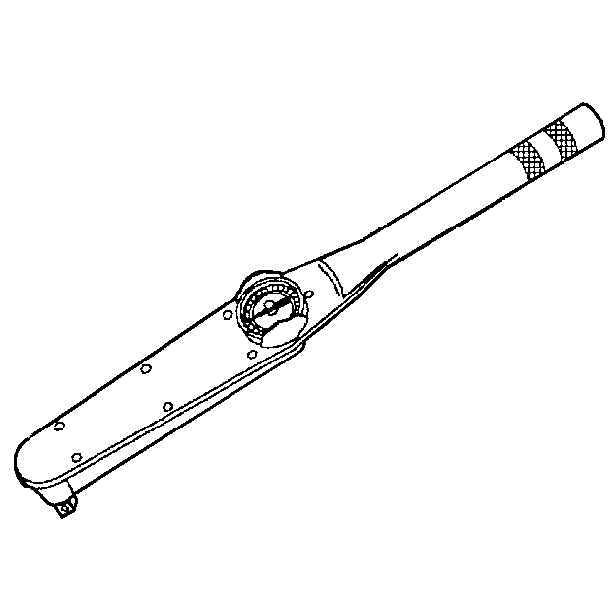
Some of the newer model wrenches, such as the Snap-on® Direct Reading Torqometer wrench (Model TES or equivalent) can be held at any position on the wrench without affecting accuracy. These wrenches are preferred over the flexible beam types because of their greater degree of accuracy, compact design, and scales that are easily readable.
Torque Wrench Accuracy
Selecting the proper size and range of a torque wrench is important in obtaining accurate results. The best quality torque wrenches (the Snap-on® Direct Reading Torqometer models or equivalent) are accurate within 2 percent of the indicated reading from 20 percent of full scale to full scale. For example, a 200 N·m (148 lb ft) full scale torque wrench is guaranteed to be accurate from 40 N·m to 200 N·m (30-148 lb ft) (20-100 percent of full scale). Using this wrench below 40 N·m (30 lb ft) (its guaranteed operating range) could result in inaccurate torque readings and possible joint failure due to either an overtorque or undertorque condition.
Torque Wrench Selection
Since it is not possible to purchase one wrench to fit the widest range of torque specifications in the service environment, the following guidelines should be used for torque wrench selection:
| • | 0-20 N·m Full Scale (177 lb in). Accurate from 4-20 N·m (35-177 lb in). |
| • | 0-75 N·m Full Scale (55 lb ft). Accurate from 15-75 N·m (11-55 lb ft). |
| • | 0-250 N·m Full Scale (185 lb ft). Accurate from 50-250 N·m (37-185 lb ft). |
Torque Wrench Calibration
This is a general guideline and is published to facilitate the selection of a range or torque wrenches that would cover most applications and would remain in the guaranteed accuracy ranges of the wrenches. Once a wrench is put into service, nothing guarantees that the wrench will remain calibrated within its accuracy range. It is recommended, therefore, that torque wrenches be calibrated a minimum of twice annually. Once again, the torque wrench is a precision measuring device. The torque wrench is exposed to rugged working conditions. Precautions must be taken in order to protect against inaccurate measurements.
Continuous Pull Method
Once a torque wrench is selected, use a technique called the CONTINUOUS PULL METHOD in order to increase accuracy during torquing. Pull the torque wrench in one continuous, smooth action until the specified torque is reached. There is no jerking or ratcheting during this final tightening effort. The continuous pull method is an excellent way to develop consistency.
Torque Defined
Torque is defined as the measurement of resistance to turning or rotating. Torque, often called torsional or twisting movement, tends to twist a body about an axis of rotation. A typical application is the tightening of a screw.
Torque applied in tightening a common bolt, nut, or screw is expended in three areas:
| • | the head |
| • | bearing surface |
| • | clamp load |
Clamp Load
About 50 percent of applied torque is used in overcoming bearing friction. This is the friction between the bearing surface of the bolt head, screw head or nut face, and the base material or washer (the surface the fastener is rotating on). Approximately 40 percent of the applied torque is used in overcoming thread friction. this leaves only about 10 percent of the applied torque to develop useful clamp load. Clamp load is the force that holds a joint together. Friction can account for as much as 90 percent of the applied torque on a fastener.
Torque Techniques
The frictional characteristics of each fastener or threaded hole can vary under a variety of circumstances. For example, consider a joint that has 10 bolts. If all 10 fasteners were torqued to 20 N·m and the clamp load is measured, all 10 bolts would most likely have different clamp load readings. Even though all 10 bolts are 20 N·m, it not guaranteed that they have all reached the same clamp load. A rule of thumb is that the clamp load can vary 25 percent using torque control for joint assembly.

At times, critical applications such as cylinder head bolts require very tight tolerances for clamp load distribution. If torque is not considered to be accurate enough for these critical joints, an alternative method of tightening called torque angle may be used. Torque angle is required for critical joints because it can help eliminate frictional variations in the joint. Generally, the steps for using the torque angle method are listed in the following:
- Tighten to a predetermined seating torque to remove any compliance out of the joint.
- Turn the fastener to a specified angle of rotation. Use the Torque Angle Meter .
This is the only acceptable general method for measuring this angle of rotation. Follow the specific procedure where it is provided.
Torque Wrenches and Techniques
The term torque wrench is commonly used to describe a type of measuring tool. The tool is set or calibrated in such a way as to make possible the measurements of the resistance to turning (torque). The torque wrench measures this resistance to turning and, therefore, is the method used to obtain objective tightening data used in the assembly of fasteners. A torque wrench is a gauge tool that can be compared with micrometers, dial indicators, vernier calipers, levels, and other measuring devices.
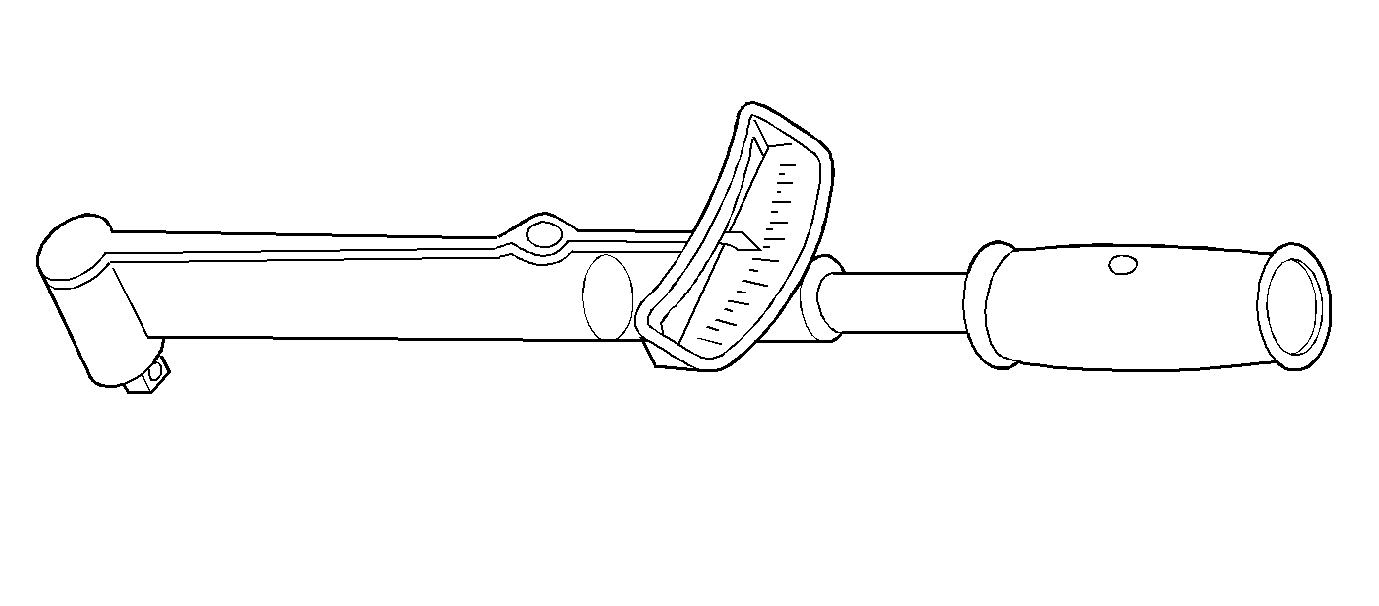
Tapered Beam Model Torque Wrench
Of the many different types of torque wrenches available, the most popular in the service field is the tapered beam model. This model uses a pointer attached to the head that runs the length of the flexible beam (shaft) to a scale located near the handle. As the wrench is pulled, the beam bends and the pointer indicates the torque on the scale.

Click-type Torque Wrench
Another type of torque wrench is the Click type which is adjusted to a predetermined torque. Once the designated torque has been reached, the wrench has a reflex signalling feature that causes a momentary breakaway of the body of the torque wrench. This feature has the effect of sending a strong impulse to the technician's hand. Although once quite popular, these wrenches are not the preferred method for torque applications.
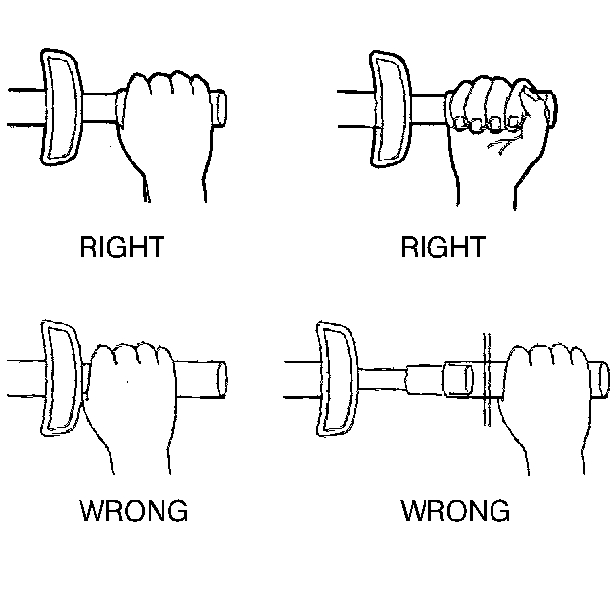
Pivoted Handle Torque Wrench
Some types of torque wrenches are equipped with a pivoted handle. If used properly, this handle permits the accurate and correct use of the torque wrench. In order to hold a pivoted type handle, it should be floated on the pivot point. This concentrates your pulling force. If the pivoting handle comes in contact with the yoke extension during the process of pulling, there is a very good chance the torque readings will be inaccurate because this could alter the wrench loading point. The design of the handle, however, makes it inconvenient to deliberately use the floating principle improperly.

Direct Reading Torque Wrench
Some of the newer model wrenches, such as the Snap-on® Direct Reading Torqometer wrench (Model TES or equivalent) can be held at any position on the wrench without affecting accuracy. these wrenches are preferred over the flexible beam types because of their greater degree of accuracy, compact design, and scales that are easily readable.
Torque Wrench Accuracy
Selecting the proper size and range of a torque wrench is important in obtaining accurate results. The best quality torque wrenches (the Snap-on® Direct Reading Torqometer models or equivalent) are accurate within 2 percent of the indicated reading from 20 percent of full scale to full scale. For example, a 200 N·m (148 lb ft) full scale torque wrench is guaranteed to be accurate from 40 N·m to 200 N·m (30-148 lb ft) (20-100 percent of full scale). Using this wrench below 40 N·m (30 lb ft) (its guaranteed operating range) could result in inaccurate torque readings and possible joint failure due to either an overtorque or undertorque condition.
Torque Wrench Selection
Since it is not possible to purchase one wrench to fit the widest range of torque specifications in the service environment, the following guidelines should be used for torque wrench selection:
| • | 0-20 N·m Full Scale (177 lb in). Accurate from 4-20 N·m (35-177 lb in). |
| • | 0-75 N·m Full Scale (55 lb ft). Accurate from 15-75 N·m (11-55 lb ft). |
| • | 0-250 N·m Full Scale (185 lb ft). Accurate from 50-250 N·m (37-185 lb ft). |
Torque Wrench Calibration
This is a general guideline and is published to facilitate the selection of a range or torque wrenches that would cover most applications and would remain in the guaranteed accuracy ranges of the wrenches. Once a wrench is put into service, nothing guarantees that the wrench will remain calibrated within its accuracy range. It is recommended, therefore, that torque wrenches be calibrated a minimum of twice annually. Once again, the torque wrench is a precision measuring device. The torque wrench is exposed to a rugged working conditions. Precautions must be taken in order to protect against inaccurate measurements.
Continuous Pull Method
Once a torque wrench is selected, you will use a technique called the continuous pull method in order to increase accuracy during torquing. Pull the torque wrench in one continuous, smooth action until the specified torque is reached. There is no jerking or ratcheting during this final tightening effort. The continuous pull method is an excellent way to develop consistency.
